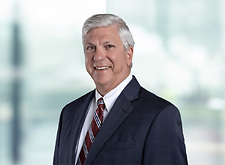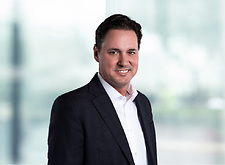Last month, we wrote about a recent ALJ Order dealing with New York’s application of the convenience rule to a situation where a taxpayer’s New York office was closed during COVID. In that piece, we noted that we expected a decision in February 2024 in the Zelinsky case, in which the petitioner was making similar arguments about the application of the convenience rule during COVID.
Well, Christmas has come early. Late last week, the Division of Tax Appeals posted a determination in the Zelinsky case, two months earlier than expected. Unfortunately, the decision does not bring tidings of comfort and/or joy for taxpayers.
Here’s the background: Professor Zelinsky unsuccessfully tried to invalidate the convenience rule on constitutional grounds more than 20 years ago. That case made it to the highest court in New York. But with the explosion of remote work generally, and more specifically the circumstances resulting from the COVID pandemic, Professor Zelinsky decided to bring another case. In 2019-2020, the professor worked as a law professor at Cardozo Law School in New York. He often performed his services from his home in Connecticut. At the ALJ hearing, the current case determined that his facts in 2019 were like his facts in the prior litigation. In 2020, of course, the facts were a lot different, since his employer was required by government edict to close its doors due to the pandemic. So the professor’s work from March 2020 onward was done at home because his employer (and New York State) prohibited the professor from working on-campus.
In her decision, the ALJ found that: (i) for the 2019 tax year, the taxpayer was bound by Zelinsky I; but also (and more surprisingly), (ii) in a case of “first impression,” the convenience rule still applied to the 2020 tax year, even though Zelinsky’s employer closed its New York facility. To quote from the decision, “the fact that petitioner’s employer did not provide accommodations but instead allowed petitioner to work out of state at home does not constitute employer necessity or requirement by Cardozo.”
It is this latter holding that we expect will send shockwaves through the SALT world, and will be debated by other judges and courts in the years to come. Indeed, as we noted in our post last month, it seems bizarre to hold that an employee was working outside New York for their own convenience when their employer (or the government) required it.
How did the ALJ get there? First, the judge distinguished other cases where the convenience rule was not applied, since in those other cases, the employee had “specialized facilities” near their out-of-state home that were not present in New York. Next, the judge held that allowing the professor to treat his remote workdays in Connecticut as non-New York workdays goes against the policy of the convenience rule, which is to prohibit nonresidents from receiving a special benefit for working at home. And third, the judge made an unusual argument, citing the Wayfair case, where she seemingly equated “virtual” workdays as “physical” workdays.
We expect these points and others to be poked at and debated for the next few years. But here are a few quick reactions:
- One of the things we think we’ll see in some of these cases is an argument by the Tax Department (or potentially courts) that the convenience rule is only or mainly applicable in “specialized facility” cases, i.e., situations where the taxpayer needed special facilities in order to do their job at home.
- But a distinction will need to be made and clarified that these Covid cases will not be “specialized facility” cases. In these Covid cases, the argument should be that, due to pandemic closures, work was required to be performed away from the New York office because there was no office to work at in the first place.
- The ALJ also referenced some other cases, notably the Kitman case, for the proposition that a strict standard of employer necessity has been applied by courts in cases where an employee was just working out of a home office, “because of the obvious potential for abuse” in such situations. And while this may be the case, this does not mean that an employee can never meet the necessity rule when working out of a home office. Indeed, as the ALJ noted, this is a case of first impression. If there is any situation where the application of a strict rule would lead to the finding of employer necessity, these Covid cases are probably it! No one could or would ever suggest that taxpayers who worked in a home office during the pandemic did so to avoid taxes; they did so because they had no other choice.
- Along similar lines, the ALJ also makes reference to one of the underlying justifications that the courts have referenced for the convenience rule, which is that nonresidents should not receive a special tax benefit for remote work when residents do not receive the same benefit. But even if this kind of policy was relevant (under rules of statutory construction, looking to an underlying policy justification for a rule cannot change how the plain language of the rule is interpreted), this policy also has an anti-abuse aspect to it. For example, if an employee may choose whether to work from home or not, then it makes sense that the rules should not provide that employee with some kind of extra tax incentive that a New York resident employee would not have. But if neither the employer or employee have control over whether the employee could work at the employer’s New York facility, then it should not offend any kind of “fair tax” policy to allow a nonresident to be taxed differently.
- Finally, the ALJ also addressed what we have been calling the “Hayes situation.” Hayes was a New York case holding that if the employee did not work in New York at all during the year, then the convenience rule cannot apply, even if the employee is working outside New York for their own convenience. The ALJ distinguished Hayes in part because the professor did work in New York for some portion of 2020. But also, the judge looked to Wayfair for the idea that “[i]n this modern economy with its internet technology, one can be present in a state without needing to physically be there.” Thus, based on an expansive interpretation of Wayfair, the judge appears to be equating virtual presence with physical presence. Thus, what the judge might be implying here is that, even if we had a “Hayes situation” because the professor did not work in New York at all during the tax year, the tax department could still treat his remote workdays as New York workdays under some kind of Wayfair “virtual presence” standard. But this seems like an apples-to-oranges comparison. In Wayfair, the Court found that the changes with the “cyber age” essentially meant that an out-of-state company could have a significant connection with a state, and one that would be enough to satisfy constitutional institutional nexus standards, even without a physical presence. But it is one thing to say that a virtual connection is sufficient for constitutional institutional nexus purposes. It is quite another thing to say that a virtual connection is in fact the same as a physical connection at the transactional level. The Wayfair court did not go that far. So, it seems odd for an ALJ to make such a leap. If the State of New York or the Tax Department wanted to equate physical presence days with “virtual” presence days, it could certainly do that by changing the rules. But an ALJ in New York’s Division of Tax Appeals should not be able to go beyond the language in the statute or regulations and create a new rule like this.
That’s it for now…expect to see more commentary in these pages and others in the coming weeks and months!


